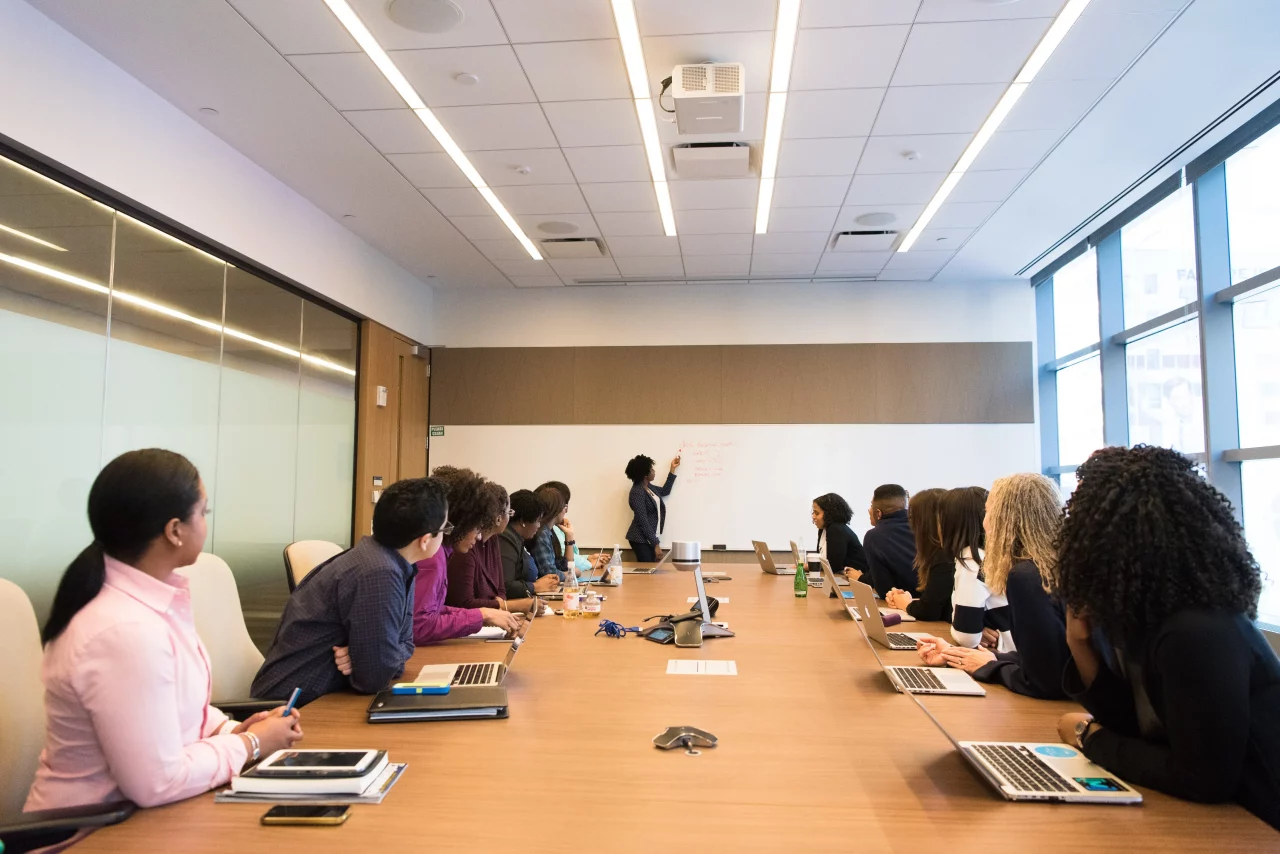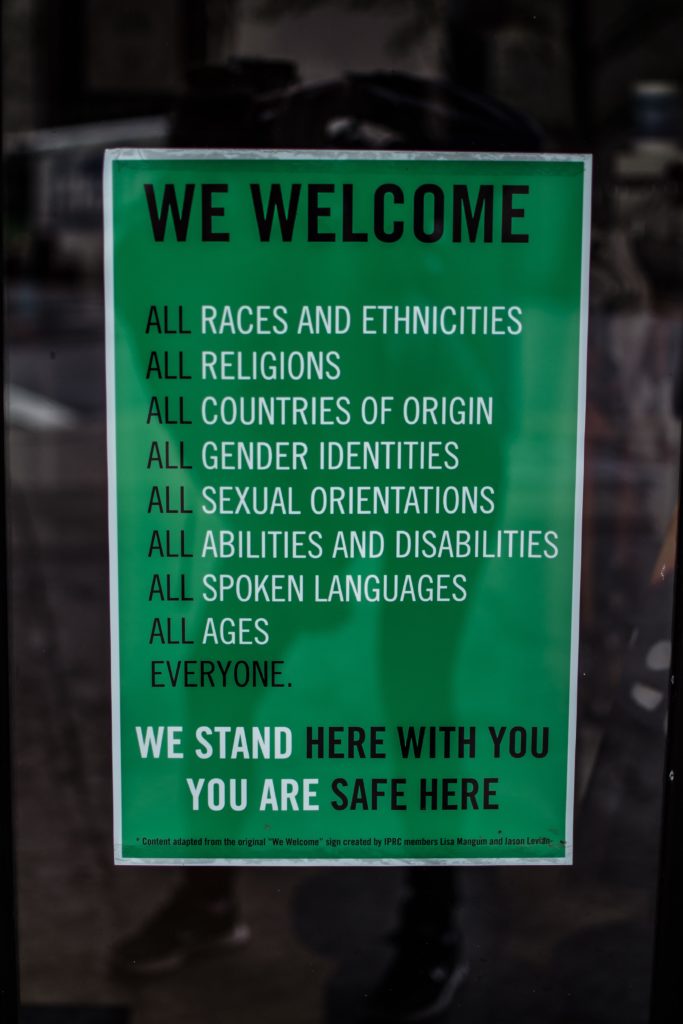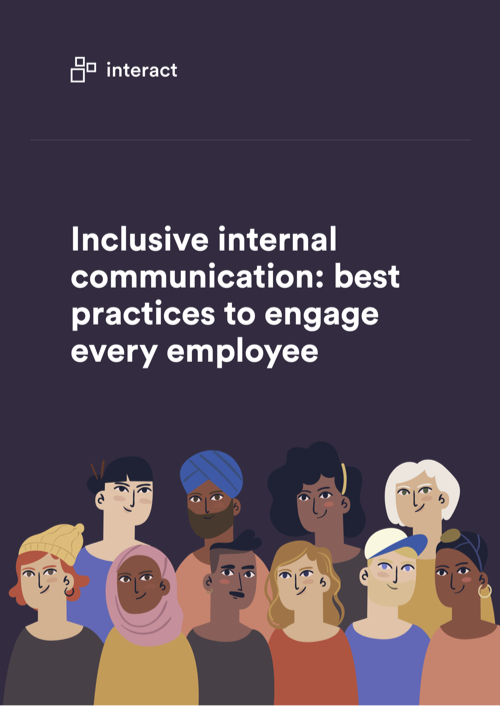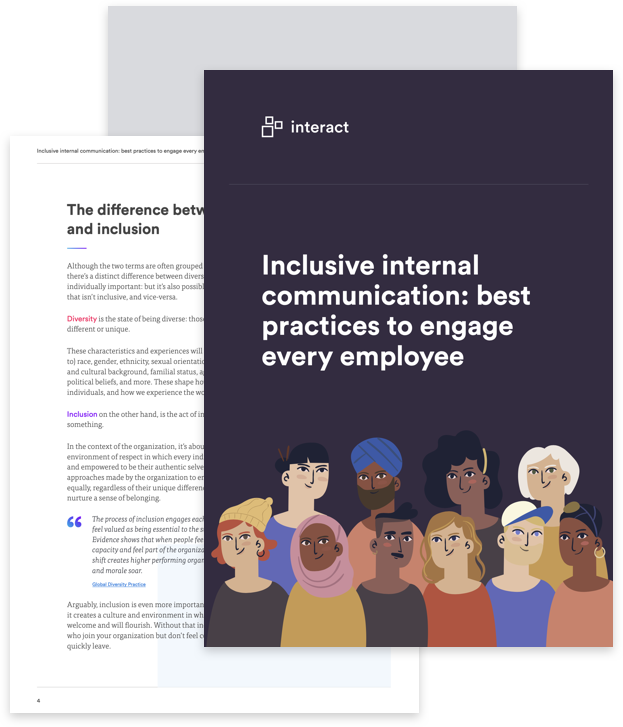Diversity, equity and inclusion (DEI) continue to be both a priority and a challenge in today’s workplaces. But aside from being a legal and moral obligation, diversity actually makes for more successful, profitable organizations and happier employees. A DEI strategy has a critical role to play.
When we embrace and value different thoughts, ideas, experiences, and identities – and the ways in which those differences bring unique ways of working to our organizations – everyone stands to benefit.
DEI in in the workplace has been a hot ESG topic for many years, but truly cultivating an inclusive environment for our employees goes a great deal further than merely hiring more individuals from underrepresented groups. It requires a cultural shift, a commitment at every level of our organizations: and that’s something that isn’t always easy or attainable.
While we’re now the most diverse we’ve ever been, there is still some way to go. Many organizations still struggle to talk about and address issues around DEI: particularly as it inherently involves conversations about gender, race, sexual orientation, physical and mental ability, and more.
Communication is sometimes considered a risk: opening us up to scrutiny, showing where we’re failing, increasing the chances of being called out for discriminatory attitudes or practices, or even being perceived negatively as an internal PR ploy. It’s a fine line to walk. Rather than risk getting it wrong, many choose to shy away from talking about diversity, equity and inclusion in the workplace altogether.
However, it’s a topic too important to ignore: we can’t afford to be silent. Devising a DEI strategy for both internal and external communication is critical for today’s workplaces.
Free ebook – Inclusive internal communication
The value of diversity
“While legislation sets minimum standards, an effective DEI strategy goes beyond legal compliance and seeks to add value to an organization, contributing to employee well-being and engagement.” – CIPD
Research into the importance of diversity in the workplace is long-established and clear in its findings: diversity pays.
McKinsey’s Delivering through Diversity report found that companies in the top quartile for gender diversity on their executive teams were 21% more likely to experience above-average profitability than those in the fourth quartile; for ethnic and cultural diversity, that was a 33% outperformance figure.

Inclusive companies are 1.7 times more likely to be innovation leaders in their market (Josh Bersin); to demonstrate greater decision-making (diverse groups outperform individual decision-makers up to 87% of the time, Cloverpop found); faster at problem-solving (HBR) and see higher employee engagement (Deloitte).
67% of job seekers also state that a diverse workforce is important when considering job offers, according to a Glassdoor survey; and a Harvard Business School survey found that 91% of companies with more workplace diversity report higher customer satisfaction.
Let’s be clear: diversity, equity and inclusion in the workplace is not a fad. It’s not just a moral responsibility. Yes, it is an expectation, a benchmark; but it also offers organizations a tangible, competitive advantage.
Designing your DEI communication strategy
Diversity is a broad concept: spanning everything from gender, age, and ethnicity, to religion, cultural background, sexual orientation, race, language, education, ability and more. Embedding a culture of inclusivity that addresses the many ways in which we are different is undoubtedly a challenge.
Creating inclusive workplaces also covers a multitude of requirements. We not only need to ensure we adopt inclusive hiring and management practices, and that opportunities available in our organizations are open to all. We also need to ensure respect, tolerance, and understanding among our employees; often, this means challenging deep-set biases that come from outside the workplace, which can be perpetuated by media, family, or society in general.
That’s a tall order for any organization, and not something we can conquer alone. However, we also can’t be complacent or back away from the responsibility. Every organization should play their part in confronting the issues of diversity, equity and inclusion.
Free ebook – Inclusive internal communication
What is diversity, equity, and inclusion in communication?
The role and responsibility of DEI communications is two-fold:
- To give each individual and diverse group a voice and sense of belonging within their organization
- To inform, educate, and support all employees to adopt inclusive attitudes in every aspect of their working lives
Those charged with developing and executing a DEI strategy must also recognize the nature of intersectionality: we all have multiple identities that influence how we interact with others. Just because we may fall into one group, doesn’t mean we don’t fall into either categories; a mindful approach that ensures we don’t “box” individuals in is crucial.
So, what elements need to be considered when evolving your diversity, equity and inclusion communications strategy?
#1: Commitment and leadership

While we’ve seen the occasional inspiring story of grass-roots transformation initiated by employees looking to drive change, the truth is, diversity, equity and inclusion has to come from the top and filter through to all levels of an organization. If your senior leaders aren’t fully committed to the cultural shift required, it won’t happen.
Setting out the business case – relating back to those benefits we already highlighted – is a good start for securing support. Asking for senior representatives to be visible champions or sponsors of your DEI program and lend their voice and gravitas to communications is perhaps the most effective way to make them credible, get employees listening, and drive organizational change.
#2 Define what diversity means to you – and the ‘WHY’
It’s easier to tell a coherent story when you fully understand what the terms ‘diversity’ and ‘inclusion’ mean to your organization.
Don’t fall into the trap of copying and pasting generic statements or policies just to tick this particular corporate box. It’s important to have a real discussion about why your organization is doing this, and how you regard diversity. Are there particular areas or challenges you as an organization or industry should be targeting?
Put the question to your employees; are there areas where your organization is failing to meet its obligations? Are there already existing champions for particular groups that will lend their voice and support?

For example, female representation in the tech industry continues to be well below average. Choosing to commit to an overarching diversity strategy but also putting in place specific initiatives to address this shortfall may be the primary focus for an organization in this industry.
#3 Transparency
It tends to strike fear in the hearts of many senior leaders, but owning your position and being transparent about your current status is important. This shows your organization is taking responsibility, makes you accountable, and demonstrates commitment to change.
Transparency may be through the publication of equal pay or workforce demographics, for example; or even simple communication from senior level to say – this is where we stand, but this is our corporate vision for where we want to go.
Failing to disclose or even simply ignoring DEI altogether will be perceived negatively as shirking responsibility, lack of tolerance, or even shady and underhand. Make no mistake, conversations and thoughts about DEI are already taking place. By refusing to bring these into an open arena, you create a breeding ground for misconceptions, ambiguity, myths and misunderstanding.
Free ebook – Inclusive internal communication
#4. Set out standards for inclusive language in all comms
Inclusive language is language that is free from words, phrases or tones that reflect prejudiced, stereotyped or discriminatory views of particular people or groups. It is also language that doesn’t deliberately or inadvertently exclude people from being seen as part of a group.
While the majority of experienced communicators will have practice in adopting inclusive language, this may not necessarily extend across your organization; and as our empathy and understanding of diversity in all its forms continues to grow, our vocabulary and word choices are evolving also.
Setting out standards as a reference and reviewing these regularly can go a long way in challenging even unconscious or unintentional discrimination.
For example, being gender-neutral in everyday language includes avoiding the use of ‘guys’ as a capture-all statement. The cultural popularity of this term – perpetuated by its use in pop culture and television – means many may be unaware that it has discriminatory associations. Replacing it with ‘everyone’, ‘team’, or ‘all’ is considered more inclusive. Setting out basic standards and best practice can highlight these potential issues and help educate employees.

The Inclusive Language principles set out by Handshake is a great starting point; or there may be State or government principles you can adopt and build upon. However, many guidelines accept that there is no universal rule book: not everyone will agree on everything. Educate middle managers and employees that it’s OK to ask if they are unsure.
#5. Promote policies and initiatives
Don’t let your DEI strategy become a pile of dusty folders stashed in the filing room that no-one knows about. Open conversations can only take place when everyone is aware of the company position, the expectations placed upon them, and how to set a company vision and then achieve it.
Create a dedicated area for diversity, equity and inclusion in the workplace, with all policies easy to find. When you run initiatives, awareness days, training or events, ensure they’re widely promoted and accessible to all: especially those away from your corporate headquarters, such as front-line workers.
Where possible, make it a two-way conversation, rather than a top-down mandate. When staff are given the opportunity to engage, respond and contribute, it embeds the message, makes it more relatable, and will affect positive change.
#6. Ensure diversity, equity and inclusion are embedded in recruitment and onboarding communications
The recruitment process is one of the hottest areas for DEI strategy; standards, best practice, training, and accountability are typically focused on this stage of the employee lifecycle.
However, this focus has traditionally been on the individuals involved; seeking to address unconscious bias in hiring, for example, or language used by middle managers in interview.
In today’s digital workplaces, there is a significant amount of non-verbal content and communication that occurs when we hire and onboard new members of staff: ranging from the ‘work for us!’ section of your website and job descriptions or adverts, through to acceptance and welcome letters, contracts, training materials, onboarding intranet information, and more.
Evaluate your entire recruitment and onboarding process for written communication and its alignment with your DEI strategy. Include commitment statements, check for inclusive language and ensure it matches with your positioning as an organization.
Free ebook – Inclusive internal communication
#7. Check the non-verbal comms

Not all communication is the written word; and staff should feel represented in all forms, whether that be the images you choose to use on your intranet software, the content you choose to retweet on social media, or the individuals you feature on your corporate video.
Evaluate representation across your internal and external communications and if appropriate, consider asking staff for their feedback and input. Do they feel represented or reflected in your company’s messaging and marketing?
#8. Consider how comms can be relatable and authentic
One of the most challenging DEI lines to navigate is that of promotion, and authenticity.
If employees have the perception that your DEI strategy is simply a corporate tick box that must be checked off, or is a policy that has been drafted behind closed doors by a select group of senior leaders, it will never drive true cultural change. Worse still, you’ll be seen as committing a DEI version of ‘greenwashing’: making unsubstantiated or misleading claims in a bid to be seen as more inclusive than you truly are.
From a communications perspective, this means considering how to make DEI more relatable and authentic: demonstrating your commitment, but ensuring it is communicated correctly and genuinely.
One answer is to engage in staff storytelling: empowering grass-roots employees with their own voice around the DEI issues that matter to them. Corporate storytelling that focuses on the real experiences of employees and covers everything from creating a vision to implementation and results is also more powerful – and authentic – than quoting policy.
#9. Engage with external events and groups

Awareness days, external events or initiatives, or significant days in the calendar for priority groups in your organization, should all feature in your internal communications calendar.
This may be, for example, a reminder to wish employees Happy Eid, or perhaps to raise awareness among employees of why individuals may be fasting during Ramadan. While some holidays may be more widely celebrated in particular cultures, it’s important to recognize those of minority groups and not default to a particular culture, religion, or ethnic group.
Increasingly we’re also seeing more companies choose to engage with external awareness days and events such as Pride, International Women’s Day, Black History Month, and more.
Promoting these internally – or inviting employee champions to share about those causes and days that have significance for them – and choosing to participate in external events all raise awareness, demonstrate a commitment to inclusivity, and increase tolerance and understanding among staff.
#10. Practice what you preach
There is nothing more disingenuous than an organization that invests heavily into marketing and communicating its commitment to diversity, only to continue to see a lack of representation among its people. Credibility and trust from employees and the community alike can only be gained when you truly demonstrate progress.
From a communications perspective, this means focusing, where possible, on results and outcomes – rather than aspirations. If your organization fails to meet its targets, own that and take responsibility, talking not only about what steps you take, but perhaps what needs to be done differently going forward.
Examples of inclusive communication
Advocating for inclusive communication is not just about understanding its importance but discovering tangible ways to put it into practice. As internal communicators, the challenge lies in ensuring that our messages resonate with diverse audiences and leave no one behind.
Fortunately leading employers have paved the way with real-world examples of inclusive communication, and by drawing inspiration from these examples you’ll find actionable insights that can elevate your own communication strategy.
AMS created a digital home for DEI
DEI is a top priority for Interact customer AMS, and the decision to allocate a dedicated section on the Top Menu of the company’s intranet (MyAMS) reflects its commitment to giving it the importance it deserves. Feedback indicated that DEI activities at AMS were previously perceived as static, but with the implementation of MyAMS, they are now viewed as dynamic, with frequent additions of news, events, and articles.
The company has intentionally designed this section of its site to offer an overarching view of DEI at AMS while also delving into the individual strands of DEI and region-specific initiatives. This aligns with AMS’s objectives to foster unity while paying attention to distinctions, creating a meaningful and personalized experience for all.
As AMS progresses in its corporate DEI strategy, the development of this section in MyAMS is ongoing. Recent initiatives include using the forum functionality to organize a photo competition for Autism Awareness Month and utilizing the People Stories section to amplify authentic narratives about DEI within the company. AMS also continues to promote key dates in its calendar to further advance its commitment to diversity, equity, and inclusion.
AllianceBernstein strengthened unity with ERGs
Employee Resource Groups (ERGs) form the core of Interact customer AllianceBernstein’s diversity, equity and inclusion initiatives. These voluntary, cross-divisional, employee-led groups have been established to expedite the progress of employees from traditionally underrepresented groups, allies supporting these groups, and individuals with shared purposes, interests, or backgrounds.
Through the dissemination of information, educational initiatives, and outreach to clients and communities, ERGs play a crucial role in business development as well as the recruitment, employee retention, and professional development of employees on a global scale. AllianceBernstein currently hosts seven ERGs with over 20 global chapters.
Don’t let diversity drop off the radar

Progress to becoming truly inclusive and diverse workplaces can be slow. Challenging prejudices or unconscious bias, educating on the vast range of ways in which we are different and delivering a company culture of tolerance and acceptance all require consistent and ongoing effort.
For communicators, this is the core takeaway: keep talking.
While many of the topics and challenges are potentially sensitive or seen as risky, failure to keep DEI in the spotlight will undermine any progress. Realizing a truly inclusive workplace is a journey: and as communicators, our role is to give each character a voice, and tell the story.



